Imagine that you’re someone new in your niche and you want to reach people who’d be willing to shell out their hard earned money on what you have to offer.
I know you think that’s hard to do in a short amount of time if all you do is write content and optimize it for organic search.
This is where Facebook advertising enters the scene.
Does Advertising on Facebook Really Work?
Facebook Ads should be part of your 2020 marketing strategy for these obvious and not-so-obvious reasons:
- It still is the largest social media site in the world with more than 2 billion users every month.
- Anyone can set up a Facebook ad in a matter of minutes – it’s easy to use, and there are tons of resources that’ll walk you through getting your first campaign up and running.
- You can reach your exact audience by using targeting options such as their age, language, interests, device usage, and so much more.
- Facebook is the place to turn viral content into an ad – for instance, a funny video of you that people can’t help but laugh about.
- Facebook always adds new features to improve everyone’s experience. You as a brand, and its user base as your audience.
The question is, how can you maximize Facebook so that it can give you the results you want? Brand awareness, a bigger email list, sales… you name it.
[Get Access: The Ultimate List of Facebook Ads Case Studies]
Below, you’ll find the best Facebook advertising tips that will scale your campaigns this year.
12 Facebook Advertising Tips for Your 2020 Success
Let’s get started, shall we?
1. Choose Your Placements Carefully
When you first run Facebook ads, placement is one thing you worry about. “What are my best options?” You’d probably ask yourself. In FB’s Ads Manager, you will encounter something like this:
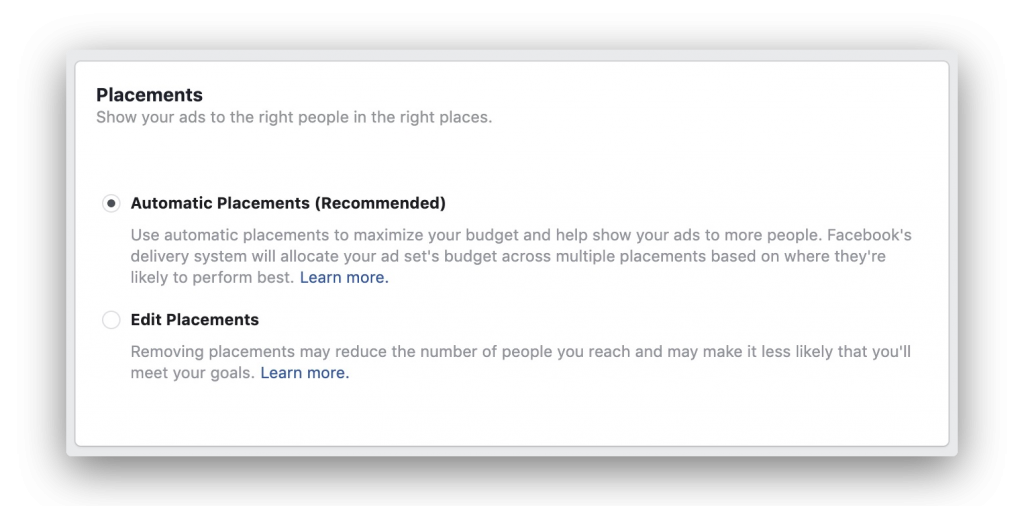
As you can see, you have two options:
(1) Use Automatic Placements so that your ad will appear in more places including FB’s feed, right column, Instagram’s stories, and more.
(2) Edit Placements so you can just pick the exact placement you have in mind based on your brand strategy. These are your placement choices (below):
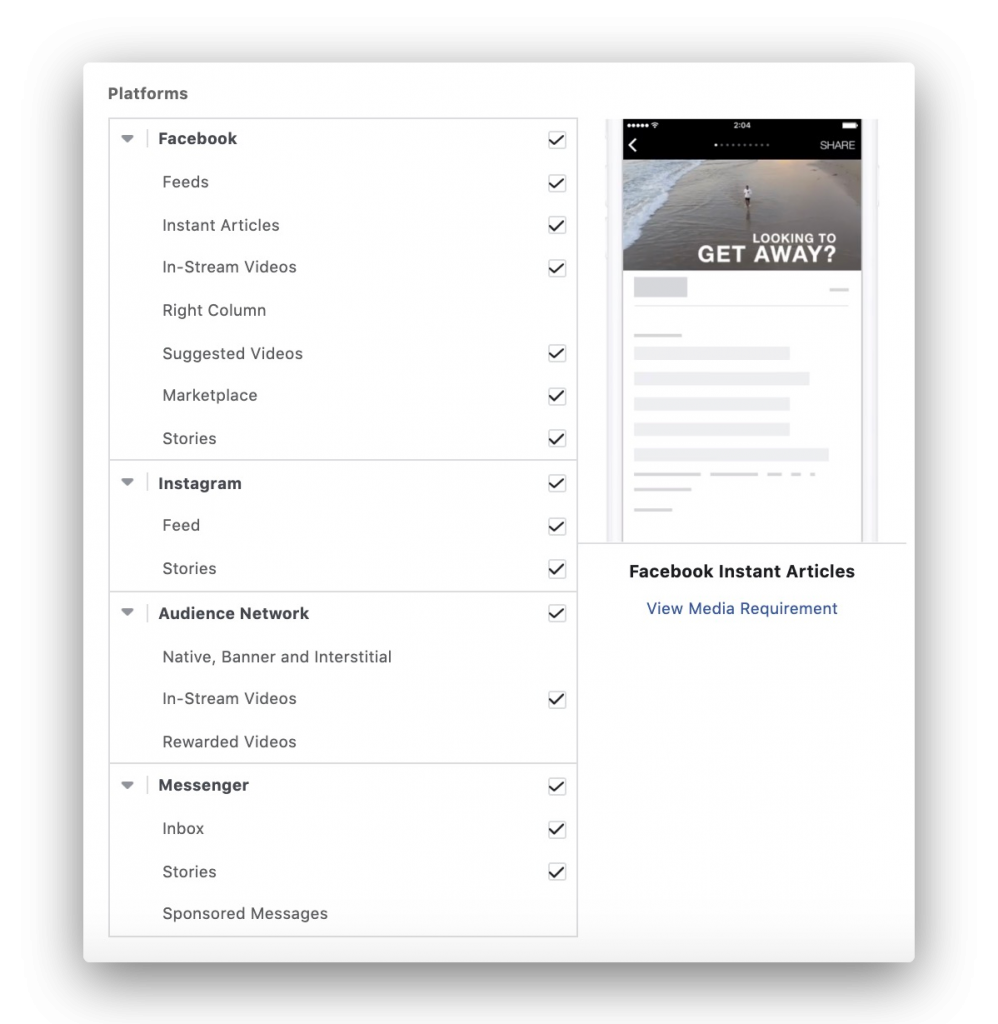
Between the two, automatic placements will help you identify which placements perform best since you’ve used up all the available placements.
Make sure to review how your placements are performing including the device/s that worked. That way, you’ll know where your budget should go for your future campaign.
3. Use the Facebook pixel
The Facebook pixel is a piece of code that, when installed on your website, gives you information that you can use to create more targeted Facebook ads.
Here’s how it works…When someone clicks on your ad, reaches your website, and takes an action (for example, buys your product), the Facebook pixel reports back this action.
With this information, you can do many things:
- Reach people who are likely to engage with you again (using Custom Audiences)
- Get current customers to make a repeat purchase
- Find out which products of yours attract more interest
- Know which device customers often use to buy from you (mobile vs desktop)
4. Use Custom Audiences
Facebook’s Custom Audiences enables advertisers to reach their customers and fans. Since you’re targeting people who’ve already engaged with your brand, this would be a great opportunity to get more ROI.

You can use your own sources or Facebook’s to create a Custom Audience (screenshot above). There are plenty of options to choose from.
For example, you can show ads to website visitors who’ve added a product to their wishlist or viewed your landing page without opting in. If you also do business offline, you may also reach your offline audience on Facebook.
Read Also: Facebook Custom Audiences: The Ultimate Guide
5. Use Lookalike Audiences
If you had the chance to further expand your reach on Facebook, would you take the opportunity?
With Facebook Lookalike Audience, you can target cold traffic (people who’ve never interacted with you) that share similar qualities with your Custom Audience.
For example, if you sell athletic apparel, uploading a list of your existing customers will allow you to reach new Facebook users that are also interested in athletic apparel.
You can decide what the size of your Lookalike Audience will be. Even if you only have 500 customers because you’re still a brand new business, but these customers are highly engaged, you have quality data on your hands that will help you get better results.
6. Test Your Idea Before You Actually Spend Money
Here’s a practical tip I borrowed from Gary Vaynerchuck, and I think that solopreneurs and companies should hear this out to avoid spending hundreds of thousands of dollars in advertising.
Validate your idea before turning it into a Facebook ad.
Instead of doing trial and error in your ad campaign, why not do trial and error using free content marketing to see if people respond to it? You can:
Tweet about it.
Create a regular Facebook post about it.
Make a video clip and share it with your Facebook fans.
Create a poll in your Facebook group to gather people’s thoughts.
Here’s another brilliant technique that will speed things up: If you create posts on your Facebook page, your best posts can automatically be turned into Facebook ads and optimized for your specific business goals – with the help of our latest tool ConnectAutomate (learn more about it here).
7. Create Carousel Ads for Ecommerce Products
One engaging way to make people notice your products is to display them in a carousel format. Here’s what it looks like, using an example from Tieks:
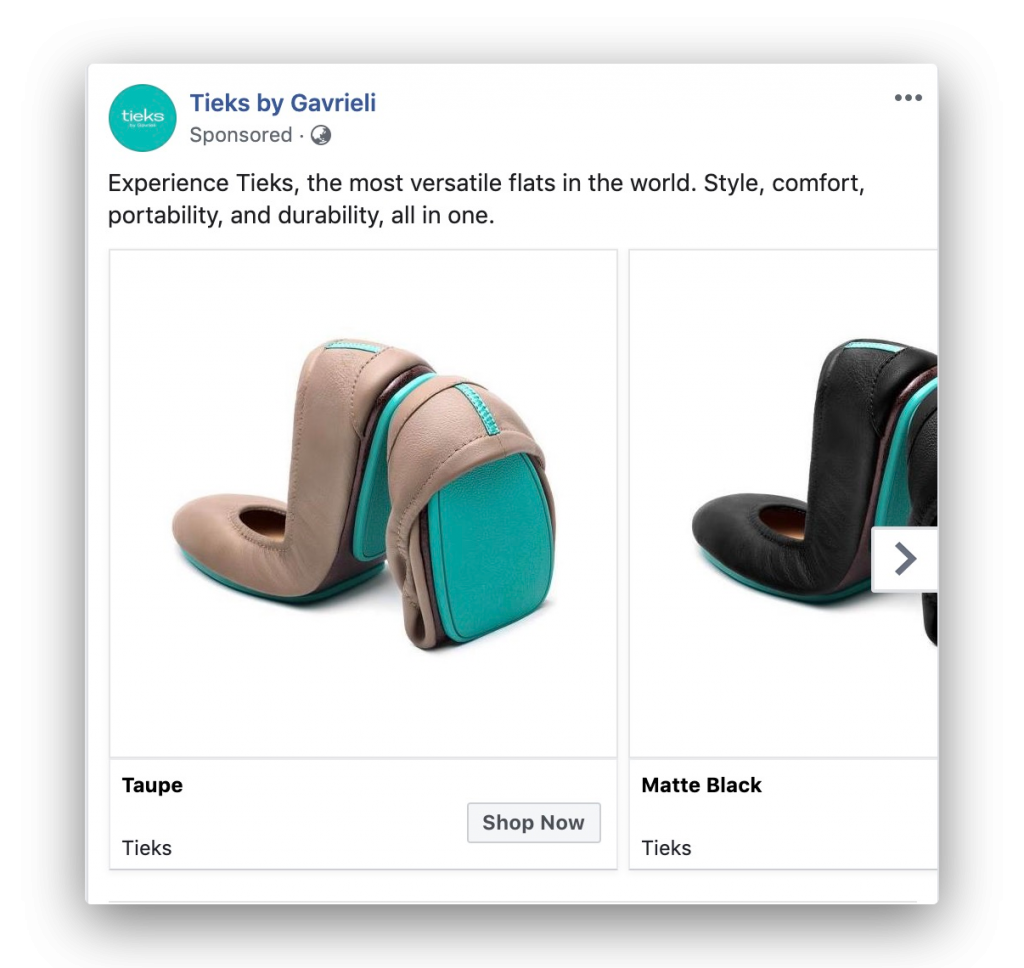
Carousel Ads enable you to showcase multiple products in cards that people can scroll, show the steps in using your product (each card corresponds to a step), or highlight specific various features of it so that people can appreciate it more.
Here are some more real-life examples of FB carousel format creatives in various niches that’ll inspire you.
8. Use Testimonials for Social Proof Ads
I’ll ask you a question: Have you ever followed a certain fashion or adopted a habit because everyone else was “doing it”? This phenomenon is called social proof, as coined by Robert Cialdini.
Using social proof to capture a cold audience is simple: Turn those testimonials into a Facebook ad. Show short testimonial quotes in a carousel format (see tip #6).
In case you don’t know, my best performing Facebook ad was actually a collection of testimonials from my UpViral users:
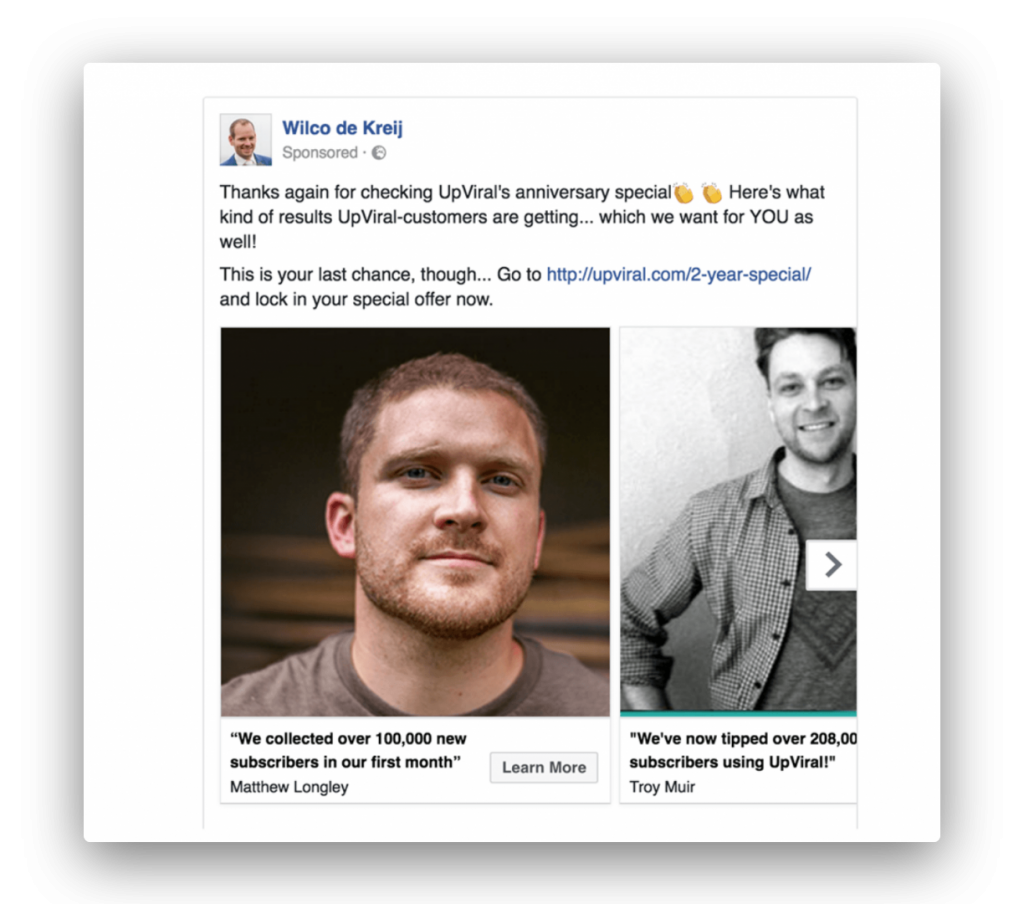
Don’t limit yourself to written testimonials. If you have videos of your users raving about your business, take advantage of those for greater results.
9. Make the Image Count
Visual content is likely to be remembered, which is why you need to pay attention to your Facebook ad image – that’s regardless of your ad.
If you check Facebook’s ad image guidelines, they advise you to use certain dimensions according to device (desktop or mobile). Here are some general tips to keep in mind with your images:
Relevance – Your image should be relevant to your target audience. It must also relate to your headline and text.
High-resolution – You don’t need to have pro photography skills to create stunning images. However, make sure that it’s a crisp snapshot.
Text in ads – Don’t put too much text in your ad image. Some exceptions include images where you’re showing your books/book cover (see the example below) or product with labels. Event posters are an exception as well.
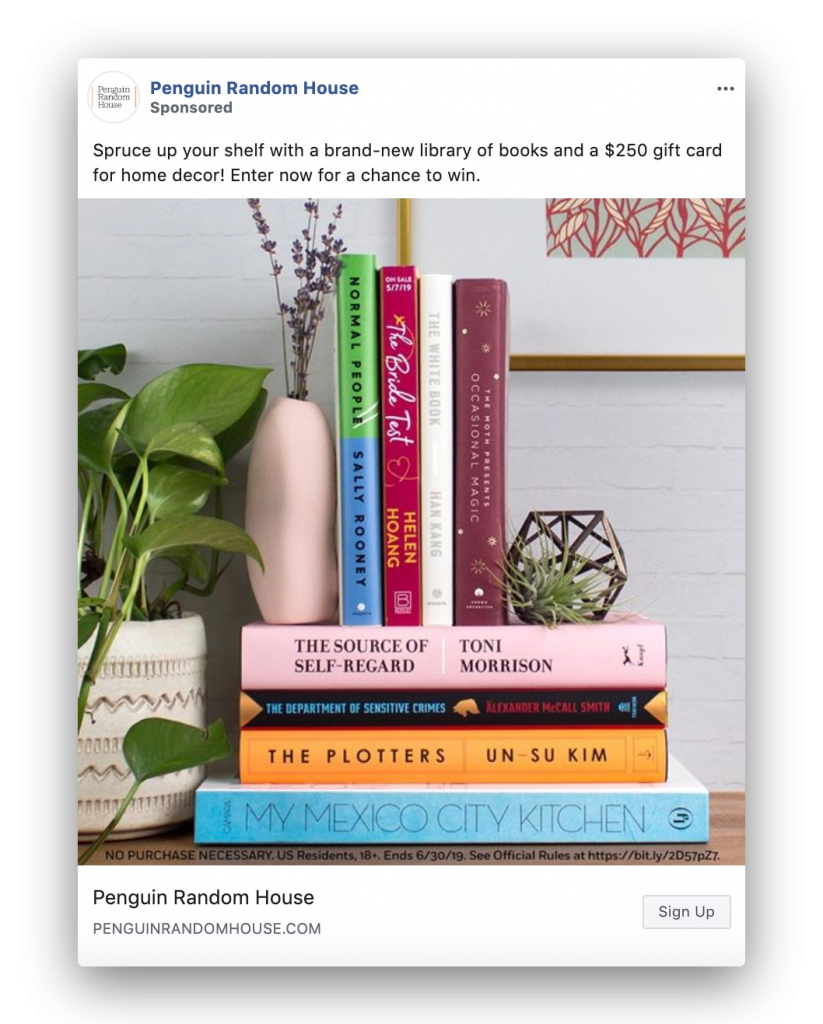
10. Get Your Landing Page Right
When learning some Facebook advertising tips, don’t ever neglect the part where your audience takes action after clicking your ad – the landing page.
Your Facebook ad and landing page must work hand in hand to meet your goal. A landing page fails if the ad itself fails to capture interest. In the same vein, a mediocre landing page doesn’t achieve anything even with a great ad.
(Tip: Try to check the conversion rate of your landing page and the performance of your ad.)
Having said this, below are some best practices for creating a landing page that performs:
Write excellent copy – Subpar content comes in many forms: Irrelevant ideas, too much text, too little text, and so on. Get crystal clear and direct. Write with one audience in mind.
Social proof – The landing page is a perfect place to add testimonials from happy customers. You can add them at the top or the bottom part of your page. Feature publisher logos if you’ve been featured in various magazines and other places. Here’s a portion of Tony Robbin’s landing page where he incorporates social proof:
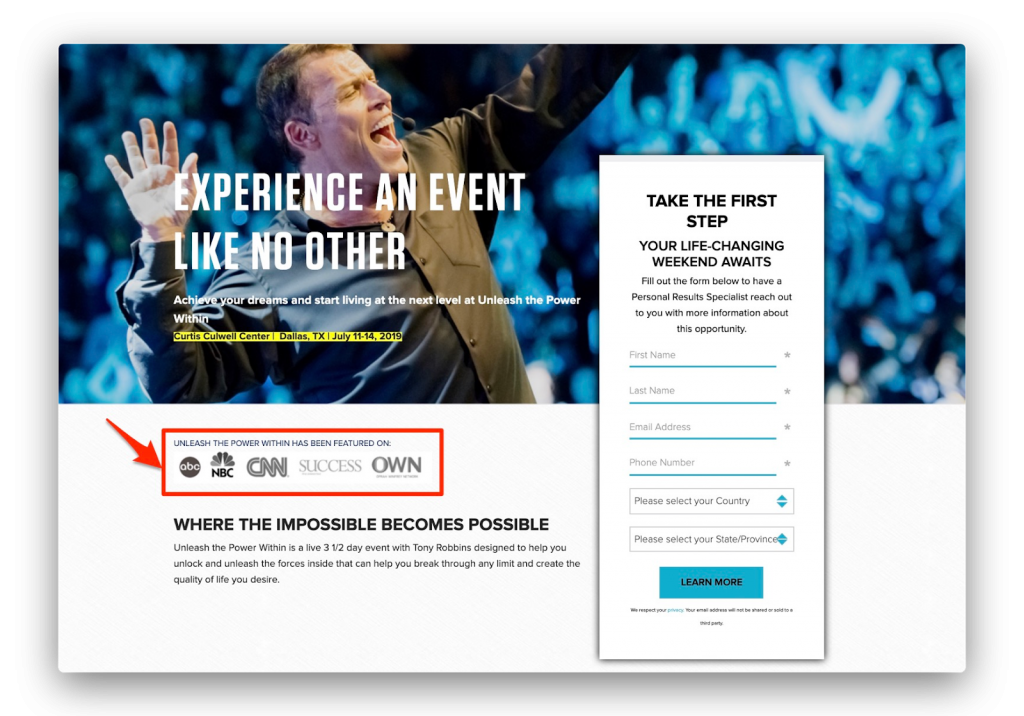
Irresistible offer – What can your audience benefit from the moment they arrive on your landing page? What did they come for?
11. Make an Impact with Video
As the years go by, people consume more video content. Each day, Facebook gets 8 billion video views (Adespresso.com).
When you create video ads, do so in a way that caters for silent viewing. Remember that people randomly scroll through their newsfeed without headphones anytime and anywhere, and they don’t want to be a nuisance to others.
Grab attention early. Keep it short, simple, yet engaging. Use video ads as an opportunity to tell your brand’s story.
Read More: Follow These 10 Facebook Video Ads Best Practices [2020 Guide]
11. Spy on Your Competitors’ Ads
Do you know what your competition is up to? Need some inspiration to create better ads? Spying on your competitors’ Facebook ads is probably one of the sneakiest things you can do to win.
You don’t even have to pay for some expensive tool to learn about other people’s ads. Here’s a proven way to do it for free:
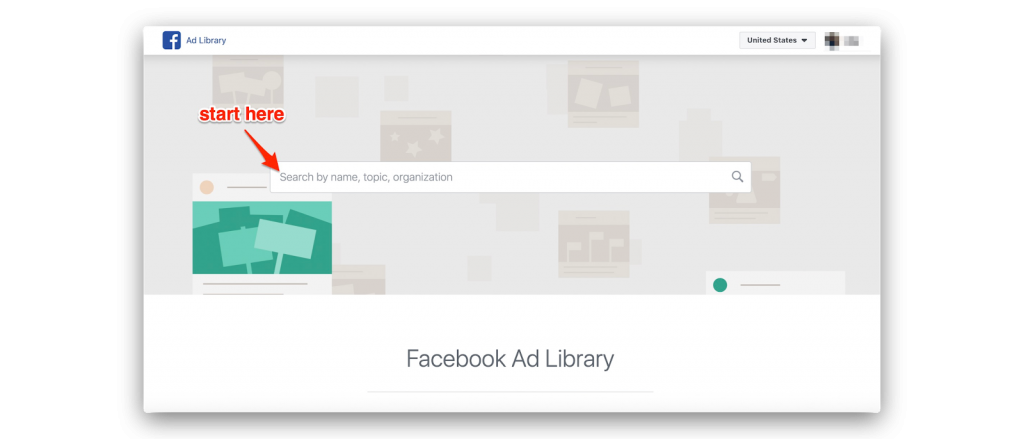
Head over to Facebooks’ database of ads (screenshot above) aka the Ad Library. Using this tool, enter the name of your competitor or any topic you would like to look up.
Facebook will then show you their collection of ads. Check out this example from App Sumo:

12. Test and Optimize Different Ad Elements
Maximize your budget and attract consistent results by finding out what works and what doesn’t. That means split testing different variables of your ad. This includes your headline, call-to-action, placement, target audience, image, and more.
You may not realize that by simply changing one thing about your ad, you could lower your cost per conversion.
Please keep in mind that split testing involves risk but that risk is worth it. Some of your experiments may not succeed and some will take time. Be patient.
Final Thoughts
Hopefully, you’ll take advantage of these Facebook advertising tips to scale your campaigns. Do check out our ultimate collection of Facebook Ads case studies for inspiration. What do you think of this post? Got thoughts to share? Comment below.

